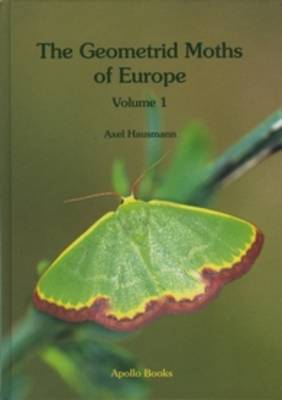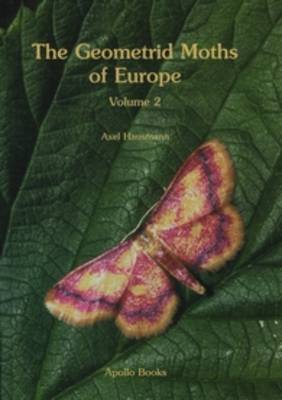Geometrid Moths of Europe
2 primary works
Book 1
Introduction to the series. Archiearinae, Oenochrominae, Geometrinae
by Axel Hausmann
Published 1 January 2001
The Lepidoptera are without doubt the best known insect order in today’s Europe. Nevertheless there is still a great lack of knowledge in some groups, such as the Geometridae. The northern and central European fauna is relatively well known, but the distribution and bionomics of a number of species are poorly known. This problem is much more marked in southern Europe where no books on Geometridae have been published for nearly a century. Data on the bionomics are frequently unavailable which makes it difficult to assess environmental threats to the geometrid species. Information on distribution is still grossly incomplete and many records have been based on misidentifications. These problems are mainly caused by the lack of comprehensive identification literature.
The geographical area covered in this series ranges from North Cape to Gibraltar and Malta, and from the Atlantic Ocean to the Ural Mountains. Each volume will illustrate the adults of all species, and if possible also subspecies, in photographic colour plates of the highest quality. Sexual dimorphism as well as polymorphism will be illustrated. Most species will be shown at natural size, but some larger groups of small species such as the genera Idaea and Eupithecia will be shown enlarged.
The geographical area covered in this series ranges from North Cape to Gibraltar and Malta, and from the Atlantic Ocean to the Ural Mountains. Each volume will illustrate the adults of all species, and if possible also subspecies, in photographic colour plates of the highest quality. Sexual dimorphism as well as polymorphism will be illustrated. Most species will be shown at natural size, but some larger groups of small species such as the genera Idaea and Eupithecia will be shown enlarged.
Book 2
In The Geometrid Moths of Europe volume 2 on Sterrhinae, a number of difficult genera such as Cyclophora, Scopula and Idaea are covered. Especially Idaea with more than 100 species occuring in Europe, has caused a lot of problems to identify, but based on the many specimens illustrated on the 24 colour plates, the species of this genus can be identified much easier now. Apart from its largest species, the genus Idaea is illustrated in 1.5 times natural size. The remaining Sterrhinae are in natural size on the colour plates. On additional black and white photos for species which are difficult to identify, their differential characters are pointed out with arrows. Three new species and three new subspecies are described. A map with the European distribution is given, and with dots for verified specimens. Finally there are line drawings of male and female genitalia of all species and also this volume contains a systematic catalogue of the European species and including those of the neighbouring regions such as North Africa, Macaronesia, Turkey, and the Middle East.

